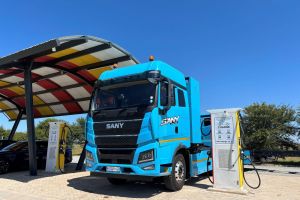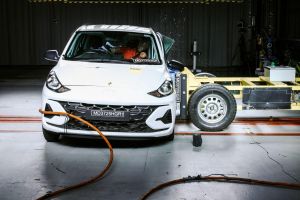
Charging an electric truck with off-grid solar power
A historic milestone has been reached with the opening of South Africa's first off-grid solar station for electric trucks.
- New Energy Vehicles
- 16 January 2026
Dealers can play a significant role in the planned value-chain expansion of the auto industry across Africa, according to panellists the at Hypermobility 2020 Conference, organised by Messe Frankfurt and Naamsa earlier this week.

During the online discussion, Dr Martyn Davies, MD of Emerging Markets and Africa at Deloitte, told the panel it is clear that by curbing the dumping of used cars from European and other markets into Africa, the vision of the African Association of Automobile Manufacturers (AAAM) to industrialise Africa could become a reality.
According to Dave Coffey, CEO of AAAM, their vision of expanding the auto industry across Africa will enable the continent to become the next auto powerhouse in the world. “To achieve a common and aligned vision of industrialising Africa, we need political willingness to create legal certainty, as well as the political willingness to create demand,” Coffey told the panel.
Mike Whitfield, President of AAAM and Chairman of Nissan Egypt and South Africa, explained how the automotive ecosystem will need an increase in manufacturing outposts in African countries. He told the panel that only four of the 54 countries in Africa (South Africa, Morocco, Egypt and most recently Ghana) are responsible for close to 100% of the production market.
Coffey agreed with this sentiment when he reminded the panel of a key pillar in the South African Master Motor Plan (SAMMP) namely “to create growth via regionalisation”. According to him, second-hand vehicles imported into African markets, however, pose a problem. “With too many vehicles being unsafe and not roadworthy, together with the onset of electrical vehicles and the planned ban on ICE-vehicles in Europe, we are likely to see an increase in the number of used cars exported to African markets,” he said.
“I believe that we must sell vehicles that are manufactured in Africa, for Africa. At the same time, it is critical to make mobility affordable to ensure the demand,” Coffey said.
According to him more than 80% of all vehicles sold in Africa are second hand. “With the right approach and good communication, we can share the business logic behind selling vehicles that were assembled on the continent, thereby creating trade and demand. But there is a need for gradual transitioning to make sure we are successful in achieving this,” Coffey explained.
With Volkswagen, Toyota and Nissan setting up manufacturing plants in Ghana, Whitfield told the panel Ghana is setting an example of how the auto industry can advance when a government provides strong political will, policy strategies and a framework developed by stakeholders as well as a commitment to succeed.
“I don’t think it is viable to have an assembly plant in every country if, in the future, we are able to move vehicles across borders. We need to create an ecosystem where components are moved between countries, creating inter-regional trade to eventually tap into the huge potential of Africa,” he said.
Whitfield emphasised the importance of obtaining ownership where affordability and access to finance on the continent are currently a challenge. “Putting an end to importing used or grey products will have little effect, if that means ownership can no longer be achieved,” he said.
According to Coffey, only 10 000 new vehicles were sold in Nigeria in 2019, while it has a population of more than 200 million people. “The influx of used cars to this region is phenomenal,” he said and told the panel that the quality cars that are assembled in South Africa could be an asset to those markets.
The role of vehicle and asset financiers cannot be underestimated in this process. Coffey called on stakeholders, including banks, OEMs, developers, investors and governments, to collaborate with AAAM to achieve its ultimate goal - access to mobility in Africa.
“Another pillar of South Africa’s Motor Industry Master Plan is to achieve 1% of global automotive production by 2035 or 1 million units per annum. This can only be achieved by playing a role in the broader and growing African market and not with exports to the European or US markets,” Whitfield added.
“Although our vision is long term, we need to make a start now. Without this vision and the willingness to achieve our goals, we are going to be exactly where we are today in ten years’ time,” Whitfield said.

With the local automotive market’s consistent growth, month after month last year, one brand is not giving up a piece of its sales cake slice.

The automotive sector is moving through one of the most transformative periods in its history, shaped by rapid advances in technology and shifting consumer priorities.

Hyundai Grand i10 owners was surprised and shocked to learn that their beloved “set of wheels” was not as safe as what they wished for.